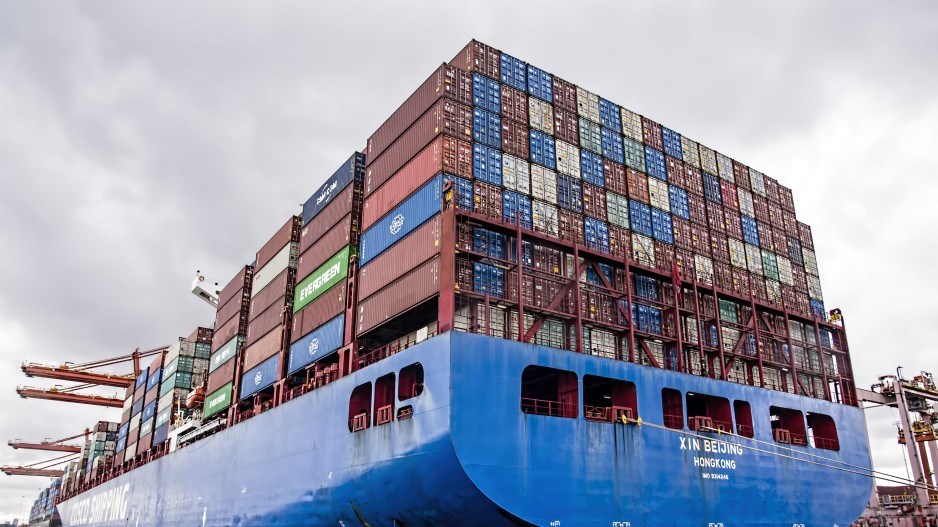B.C. exports broke a new record in 2022.
Total B.C.-origin exports reached $64.9 billion in 2022, a 20-per-cent increase over 2021, according to newly released BC Stats data.
This is the highest value on record, and is 62 per cent above the 10-year annual export average of $40.1 billion (from years 2012-2021). Experts attribute export growth in 2022 to the global recovery from the COVID-19-related recession, and the ongoing worldwide green energy transition.
Exports to the U.S., South Korea and Japan reached new peaks.
The value of goods sent south of the border from B.C. rose by 25 per cent ($7.5 billion) to reach $37.4 billion. The value of exports to Japan rose by 24 per cent (nearly $1.2 billion) to exceed $6 billion, and South Korea-bound exports saw a 40-per-cent year-over-year increase in value, increasing by nearly $1.2 billion to reach $4.1 billion.
Exports to China and Taiwan remained high after a record year in 2021, with exports to Mainland China reaching nearly $8.5 billion and exports to Taiwan exceeding $1 billion in 2022.
And after a slower year in 2021, exports to India saw a rebound and reached a near-peak level of more than $1.5 billion, which constituted growth of 104 per cent from 2021 to 2022.
“Exports are up in general.… The recovery from COVID was a big factor,” said James Brander, professor of international business and public policy at the University of British Columbia.
“A lot of the supply constraints that were affecting production in B.C. and a lot of the constraints that were affecting demand in China and other countries were reduced.”
He added that general economic growth in B.C., and other countries including China, Japan and the U.S., also added to the growth, as people who were saving money during the pandemic started to spend more, creating demand that led to more exports.
Among export categories, year-over-year growth in the value of energy products was the most significant, increasing 59 per cent from 2021 to 2022 to $24.3 billion. This followed an 80-per-cent increase from 2020 to 2021.
“It's partly driven by two factors: Global demand for energy that is impacted by the Russia-Ukraine conflict, and also by the rising commodity prices that the conflict has triggered,” said Anastasia Ufimtseva, program manager in business Asia at the Asia Pacific Foundation of Canada.
The U.S., China and Japan have been increasing their imports of mineral and energy products from B.C. in recent years, something that, according to Ufimtseva, might be driven by growing demand in the green energy economy.
“There's quite an interesting mix. One of the reasons is the need for energy domestically, but also, for example, the use of carbon neutral technologies, and mineral exports needed for green innovation and energy transition,” she said.
Meanwhile, the export of B.C. wood products to China has seen a dramatic drop in recent years and hit a new low in 2022, falling to $509 million, a 72-per-cent decline from a peak in 2013 of $1.8 billion.
“We have issues with logistics and transportation, which increases the prices of Canadian lumber”, said Ufimtseva, adding that the slower construction pace in China in recent years might be another factor.
“Also, China might be looking for local imports of goods, like Russia, who might sell the resources at a discount.”
Brander said he expects the growth to continue and see even higher exports in B.C. next year, as its trade partners recover from the pandemic’s impact.
“The health of the B.C. economy depends a lot on general economic conditions in Asia, and in the United States. So, when China and the US recover, that's good for the B.C. economy. If they go into recession, then that would be a problem for the B.C. economy,” he said.
“But as long as things continue, pretty much as they are now, then I think that we would expect to see continuing growth in export activity for B.C.”




